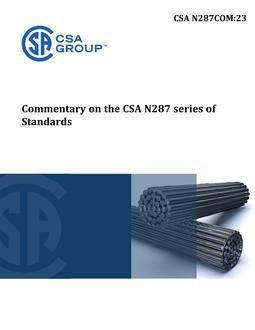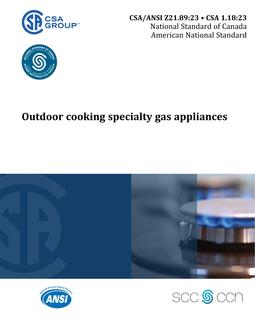
CSA ANSI Z83.25-2015/CSA 3.19-2015
- Comments Off on CSA ANSI Z83.25-2015/CSA 3.19-2015
- CSA
Preface
This is the second edition of ANSI Z83.25 / CSA 3.19, Standard for Direct gas-fired process air heaters. It supersedes the previous edition published in 2008. This publication represents a basic standard for safe operation, substantial and durable construction, and acceptable performance of direct gas-fired process heaters. It is the result of years of experience in the manufacture, testing, installation, maintenance, inspection, and research on appliances designed for the utilization of gas. There are risks of injury to persons inherent in appliances that, if completely eliminated, would defeat the utility of the appliance. The provisions in this Standard are intended to help reduce such risks while retaining the normal function of the appliance.
Scope
1.1 This Standard applies to newly produced, direct gas-fired process air heaters of the recirculating or nonrecirculating type (see Clause 3, Definitions), hereinafter referred to as heaters, whose primary purpose is to provide process heating to non-occupied spaces within commercial and industrial buildings and may also include operation as a non-recirculating ventilation air heater (see Clause 3), if the heater is operated during periods when the space is occupied. Heaters covered under this Standard are limited to a maximum discharge temperature of 250 °F (121 °C). Heaters covered by this Standard are not intended for use in any area containing sleeping quarters. The installation conforms with local codes, or in the absence of local codes, in accordance with the National Fuel Gas Code, ANSI Z223.1, or the Natural Gas and Propane Installation Codes, CAN/CSA B149.1. This Standard is intended to cover only complete packaged heaters with integral air moving components, i.e., those which are designed by, cataloged by, and built on a repetitive basis by the manufacturer. 1.2 When the heater operates with people present within the space being served by this heater, it is configured to ensure the performance window of the heater operation will be in compliance with the applicable provisions associated with the ventilation air heater mode contained in this Standard. 1.3 When the heater is operated in the bake cycle mode, the combustion by-products generated by the heater have not been defined since it is intended to operate in this mode in the non-occupied condition only. 1.4 When the heater is utilized as a paint booth heater, it must be operated as a non-recirculating ventilation air heater during the spraying operation and may be operated as a recirculating heater in the bake or drying mode provided all of the conditions identified in Clauses 4.1.11, 4.1.12, 4.15.3, 4.15.12, 4.15.13, 4.15.14, 4.21.12, 4.21.13, 4.21.14, 4.21.15, 4.21.16, 4.21.17, 4.21.18, 4.21.19, and 4.21.20, if applicable, are met. 1.5 Process air heaters that operate in the bake cycle mode only (does not operate in the occupied mode) are not required to comply with the following construction provisions: Clauses 4.15.5-b) and 4.21.1-m)-iii). 1.6 If a value for measurement as given in this Standard is followed by an equivalent value in other units, the first stated value is to be regarded as the specification. 1.7 Items unique to the U.S.A. are shown in Clause 6. 1.8 Items unique to Canada are shown in Clause 7. 1.9 Clause 2, Reference publications, contains a list of standards specifically referenced in this Standard, and sources from which these referenced standards may be obtained. 1.10 All references to “psi” through this Standard are to be considered gage pressure unless otherwise specified. 1.11 In this Standard, “shall” is used to express a requirement, i.e., a provision that the user is obliged to satisfy in order to comply with the standard; “should” is used to express a recommendation or that which is advised but not required; “may” is used to express an option or that which is permissible within the limits of the standard. Notes accompanying clauses do not include requirements or alternative requirements; the purpose of a note accompanying a clause is to separate from the text explanatory or informative material. Notes to tables and figures are considered part of the table or figure and may be written as requirements. Annexes are designated normative (mandatory) or informative (non-mandatory) to define their application.
Product Details
- Edition:
- 2nd
- Published:
- 03/01/2015
- ISBN(s):
- 9781771398244
- Number of Pages:
- 129
- File Size:
- 1 file , 3.9 MB
- Product Code(s):
- 2423411, 2423411, 2423411



